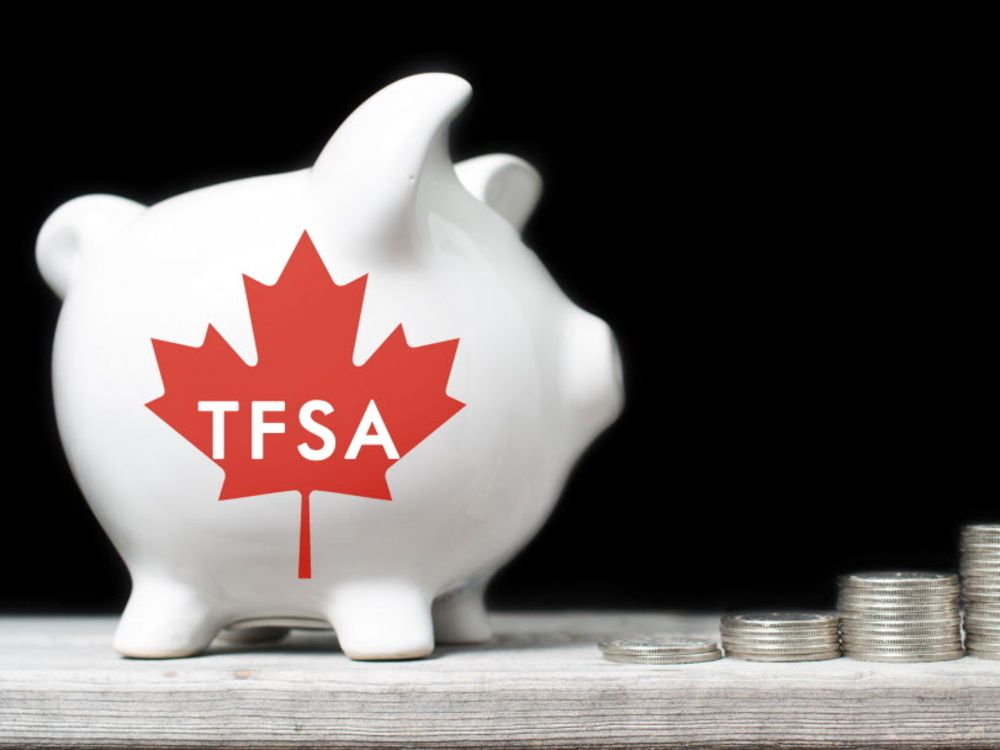Ever launched a big announcement only for it to fall flat?
That’s a PR pro’s worst nightmare, and often, it comes down to one thing: a poorly planned press conference.
What is a press conference?
A press conference is a public event where an organization or individual delivers information to journalists and answers media questions. It is used to announce news, clarify issues, or make statements. Press conferences ensure wide media coverage and allow direct communication with the public through the press.
Press conferences are not just for politicians and celebrities. It has evolved far beyond a podium and a question-and-answer session. Today, they’re immersive brand moments, part media event, part product demo, sometimes even full-scale shows, designed to tell your story in a way that sparks coverage, conversation, and credibility. Companies use them to launch products, announce major milestones, and shape public perception on their own terms.
When done right, press conferences drive high-impact coverage and credibility. When done poorly, they waste time, erode trust, and fail to move the needle. That’s why preparation, relevance, timing and using the right rool matters.
In this guide, we’ll break down what a press conference is, when to hold one, and how to make yours worth the media’s time.
TL;DR: Press conferences at a glance
- What is a press conference? A media event where organizations share news and answer journalists’ questions to reach the public directly.
- Why it matters: It helps control the narrative, build credibility, and gain widespread coverage.
- When to hold it: For major announcements, crises, leadership changes, product launches, or other newsworthy updates.
- How to plan it: Prepare well in advance, choose a strong topic, invite media, train speakers, and manage logistics.
- What are the advantages? Saves time, expands reach, builds media relationships, and lets you shape the message.
- What are the disadvantages? Requires extensive planning, offers less targeting, and outcomes aren’t guaranteed.
Why press conferences matter
Press conferences aren’t just about making announcements; they’re about what those announcements achieve. A well-planned event can influence public opinion, strengthen media relationships, and position your company as a credible voice in the industry.
Of course, PR materials like press releases, boilerplates, and media kits are great ways to get your messages heard, but press conferences are the way to go regarding a special occasion or pressing issue. It helps
- Control the narrative: Deliver information directly and clearly before speculation or misinformation takes hold.
- Strengthen media relationships: Journalists value access and transparency. Hosting press conferences builds trust and can lead to stronger, ongoing coverage.
- Expand your reach: A live event captures more attention than a press release alone.
- Put a human face to your brand: Hearing directly from company leaders or experts makes your story more relatable and memorable.
- Multiply the impact: Footage, quotes, and interviews from the event can fuel social posts, press kits, and future campaigns, extending its value long after it ends.
When to hold (and when not to hold) a press conference
Knowing when to hold a press conference takes practice. If your situation falls into one or more of the following, it’s time to start planning one:
- Break news not disclosed or covered yet
- Highlight an event with a prominent personality
- Respond to a PR crisis
- Set the record straight related to a situation or allegation
- Show support for a social cause
Several occasions warrant a conference. Here are a few examples of where businesses often hold press conferences:
- Announcing changes in organizational structure. In larger companies, announcing changes or transitions in management and leadership can garner widespread attention. For example, if a company appoints a new CEO, a press conference is good to introduce them.
- Going IPO. When companies go public, they usually hold a press conference to announce their upcoming initial public offering (IPO).
- Launching new products and services. If your company is launching a new product line or introducing new services, hosting a conference can help spread the word effectively and efficiently.
- Forming new partnerships. Press conferences are a great place to announce important collaborations or partnerships with other businesses or institutions.
- Controlling damage. A press conference helps address issues or complaints from customers or the general public regarding a company’s products and services.
- Marketing an event. It publicizes an upcoming company event or activity, allowing the general public or your target market to participate.
When not to hold a press conference
Not every announcement needs the spotlight of a press event. Hosting one for the wrong reasons can waste resources, hurt credibility, and even damage relationships with journalists. So ask yourself if your story truly deserves a press conference. If it falls into any of these categories, a press release or social announcement is likely a better choice:
- Routine updates: Minor product enhancements, feature rollouts, or operational changes don’t require a full press event.
- Limited relevance: If the news only affects a small audience or niche group, journalists are unlikely to attend.
- Lack of substance: Hosting a conference without new information or a clear message can frustrate media contacts and reduce future turnout.
- Unprepared messaging: If key spokespeople aren’t ready to answer questions or the narrative isn’t well-defined, it’s better to wait.
- No clear visual or story angle: Press conferences work best when there’s something worth covering — a strong story, visuals, or quotes journalists can use.
How to hold a press conference
As you may know by now, a press conference is a media event where speakers make statements and respond to questions from the attending journalists. But how do you get to the point of holding it?
The easiest way to break down the preparation for press conferences is by dividing your plan into three stages: before, during, and after. That way, you can focus on one moving part at a time, not juggle many things at once.
Before a press conference
You need to complete most of the work before a press conference. The most important part of the preparation is media outreach. Create an intriguing topic to attract the media to your event. FOMO (fear of missing out) makes the press get you the media coverage you want.
The ideal time to start preparing for a press conference is two weeks, but sometimes you have to act even before the scheduled time. Preparing for a press conference takes much longer than the press conference itself.
Organizing a press conference starts with the planning stage. At this stage, you start from scratch and work your way up to the point where you can run it smoothly. The success of a press conference relies largely on planning. If done poorly, the resulting event won’t be successful.
Take ample time to plan. You don’t want to rush at the 11th hour. It’s good to start planning a few weeks before the press conference. Not only does this ensure that you have enough time to put everything together, but you also have more room to make any last-minute adjustments.
When planning a press conference, here are some areas to focus on.
The topic
The primary goal of a press conference is to spread information among stakeholders. It’s crucial to pick a relevant topic that serves as a vehicle for the business to convey its message.
Ask yourself the following questions before choosing the agenda and topic:
- What message do you want to convey during the press conference?
- What announcement do you want to make?
- What issues is your company looking to address?
Journalists are always on the lookout for the next newsworthy event. If your topic isn’t compelling enough to cover, they won’t be interested in attending your conference.
Date and time
When conducting a press conference, you cannot schedule any random day and time or decide solely on whether the speaker is free. Instead, choose a date for your team and the attending journalists. Don’t delay it to the extent that your statement is no longer of interest to the media.
The time of a press conference is also critical. It’s best to choose when the media are most likely to attend. Do it at a time when you can maximize press coverage with maximum media participation.
Ensure your press conference doesn’t coincide with another event that may divert journalists’ attention. Consider the schedule of the invited media members, especially with work deadlines or other important events.
Location
A press conference’s location is as important as the date and time. Getting to the venue should be easy for journalists. A long travel time can discourage them from attending the event.
Ideally, the location should be relevant to your event or announcement. Most businesses hold press conferences at their headquarters, particularly in large rooms or areas to accommodate large groups. For a successful press conference, the location should have all the necessary facilities and equipment, including network access, parking, and other tools and utilities for reporters.
Choosing an attractive location is key. It’s difficult to hold a press conference in a confined space with poor lighting and ventilation. This can negatively impact your brand perception.
A place that facilitates interaction and communication helps you reach the right audience. If your press conference takes place on a busy street or thoroughfare, your audience has difficulty hearing you, and the speakers can’t concentrate because of excessive noise.
Speakers and moderators
Media conferences involve two important players: the speaker and the moderator.
The speaker represents a business or company at a press conference. They deliver the message, announce the news, and answer journalists’ questions, so you need to choose them wisely.
Regardless of whether the speaker is a senior member or intimately familiar with the company, they must study and train for the event. Going prepared is always better than going on the fly. Spontaneity is appreciated, but it cannot be the backbone of the entire event.
Your speaker (s) should prepare and share the key points during the press conference. The person speaking on behalf of your client or company must be aware of potential media scrutiny and hostility when dealing with a sensitive subject.
Media representatives
Once you’ve determined a suitable date, time, and location for your press conference, you can contact the people you want to attend. Get in touch with reporters and journalists and media organizations, and news agencies you’d like to invite.
Always emphasize the main topic and the speaker’s details when contacting media reps. If you invite the media a week or more in advance, send a follow-up email the day before.
Write and distribute a press release
A press release is an invitation to the media for the press conference. Include the press conference’s date, time, and location in your press release. Also, add why you’re holding it and a compelling hook to attract the reporters.
Send your press release at least a week before the event date. You can use press release distribution software to mass release your news to reporters. Get in touch with the media people you want to attend the launch via email or direct phone, even if it’s about the distributed press release.
Develop a press kit
A press kit provides reporters with an overview of the event and other important information. These kits contain folders with your topic, message, or issue.
Logistics
If the press conference takes place outside your workplace, it’s your responsibility to supervise and handle the event logistics, including the venue reservations. As part of your planning, finalize all vendor arrangements for lighting, catering, and sound, which will help you avoid any last-minute changes.
Tip: Prepare for a PR crisis before it happens to make planning your press conference easier.
Start by preparing the room on the day of the conference. Test out everything you’ll use. Additionally, create name cards, organize extra seating, and provide beverages such as water and coffee.
During a press conference
It’s the day of the conference, and you’ve done everything possible to prepare. When the media arrives, welcome them and sign them in with their contact information. Guide them to their seats and start the event on time.
Nobody likes wasting time. Starting on time is crucial to your event’s success and imperative in making reporters want to attend your next press conference.
Here’s what a standard press conference flow usually looks like:
- Registration and welcome (5–10 mins): Journalists and guests arrive, sign in, and collect press kits or background materials. Light refreshments or a brief networking window often happen during this time.
- Opening remarks (5 mins): A moderator or company representative welcomes attendees, introduces the organization, and outlines the agenda for the session.
- Main announcement or presentation (10–15 mins): The primary spokesperson — often a CEO, executive, or subject matter expert — delivers the key message. This might include details about a new product, partnership, policy, or update. Visual aids like slides, product demos, or videos are often used to support the announcement.
- Supporting statements (optional, 5–10 mins): Additional speakers or partners may provide further details, context, or expert commentary related to the announcement.
- Q&A session (30–45 mins): Journalists ask questions, and spokespeople respond. A moderator usually manages the flow of questions, ensuring everyone has a chance to participate and that responses stay on message.
- Closing and wrap-up (5 mins): The moderator thanks attendees, provides details on where to find press materials, and shares follow-up contact information.
- Post-event networking and interviews (optional): After the formal event, some companies arrange one-on-one interviews or informal conversations with key media representatives to deepen relationships or clarify details.
You can have a moderator keep track of time and call on reporters. This helps take some pressure off the speaker and focus on answering questions calmly and collectedly.
After a press conference
Congrats! The most stressful part is done. If you followed these steps, there’s no reason your press conference isn’t a resounding success. Here’s how to maximize the impact of your press conference:
- Follow up quickly: Send a thank-you email to all attendees within 24 hours. Include key materials such as quotes, press kits, photos, or video recordings to make coverage easier.
- Distribute materials widely: Share your press release and key highlights with journalists who couldn’t attend. Use press release distribution software to extend your story’s reach to a broader media list.
- Repurpose your content: Turn key moments into blog posts, LinkedIn updates, social media clips, or website content. Repurposing helps your message live beyond the event.
- Monitor media coverage: Track press mentions, articles, and social posts to measure how your story is landing. Use these insights to improve future events and identify follow-up opportunities.
- Engage individually: Reach out personally to key journalists to thank them and offer additional information. Strong relationships today lead to better coverage tomorrow.
- Leverage the momentum: Consider pitching follow-up stories, offering exclusive interviews, or releasing additional data to keep your announcement in the news cycle.
What are the advantages and disadvantages of a press conference?
A press conference can have many advantages and disadvantages, given the scope of its organization and the speakers involved. Here are some of the most common pros and cons of hosting press conferences that’ll help you decide whether holding one makes sense.
Advantages of a press conference
Press conferences offer a host of advantages. Let’s look at some of the benefits of planning and executing a conference:
- It’s convenient and time-saving. Press conferences can disseminate the core message to many people in one go. During a press conference, all reporters or journalists gather in one place. The speaker makes the announcement only once, instead of meeting several journalists and making the same announcement or answering the same questions.
- It ensures maximum impact for the information or announcement made. The fact that many reporters or journalists attended a press conference makes the announcement newsworthy.
- It lets you reach a larger audience. Regardless of the number of reporters present during a conference, it will have a widespread reach once they spread the news via their respective channels.
- It helps you build a relationship with members of the press or media. Having friends in the media is highly beneficial, and involving them in your press conferences is a good way to kickstart your media relations strategy.
- It lets you control the flow of information. You only tell the press what you want it to know. It’s entirely up to you to control what information to share and withhold.
Disadvantages of a press conference
While press conferences provide many advantages, there are a couple of drawbacks as well, namely:
- It requires planning. You need to plan a press conference ahead of time to be successful, including the logistics, correspondence between the parties involved, and several other factors.
- It’s less targeted. Even if someone’s not a part of your target audience, they’re still exposed to the information or announcement you share, and the journalists publish.
- Outcome isn’t guaranteed: Even with careful planning, media turnout and coverage can vary.
- Risk of tough questions: Speaking publicly invites scrutiny, and your spokesperson must be prepared for unexpected or challenging questions.
Frequently asked questions on press conferences (FAQ)
How long is a press conference?
Most press conferences last 45 to 60 minutes. The main announcement or presentation typically takes around 10–15 minutes, followed by a Q&A session that lasts 30–45 minutes. It’s best to keep the event concise and tightly structured — long enough to deliver key messages but short enough to hold media attention.
What is the purpose of a press conference?
The main purpose of a press conference is to share important news directly with the media and ensure the story is communicated accurately and widely. It’s often used for major announcements like product launches, leadership changes, partnerships, crisis responses, or company milestones. Press conferences also allow journalists to ask questions, which builds transparency and credibility.
What are the benefits of a press conference?
Press conferences offer several key advantages:
- They allow you to reach multiple journalists at once, saving time and effort.
- They increase visibility and impact by turning an announcement into a media event.
- They build stronger media relationships through face-to-face interaction.
- They give you greater control over messaging by letting you frame the story directly.
Who can attend a press conference?
Typically, journalists, reporters, editors, and media representatives are invited to press conferences. Depending on the event, companies may also invite industry analysts, influencers, partners, or stakeholders. It’s important to curate the guest list to include people who can amplify your story and provide valuable coverage.
How do I get an event on the news?
To get your event covered by the media, focus on the following steps:
- Make sure it’s newsworthy — timely, relevant, and impactful.
- Send a press release with clear details and a compelling angle.
- Use press release distribution software to reach a broader range of journalists and outlets.
- Follow up personally with key media contacts and invite them to attend the event.
- Offer exclusive interviews, quotes, or data that make the story more valuable for coverage.
Prepare for the worst; hope for the best!
Press conferences should improve your public image, not damage it. Preparation is key to representing your company or client better. By segregating the preparation for the press conference, you can ensure a well-attended event.
A press conference is another tool in a communications specialist’s belt. Learn how to make a PR plan and realize the full spectrum of a well-crafted public relations strategy.
This article was published in 2023 and is updated with new information.










